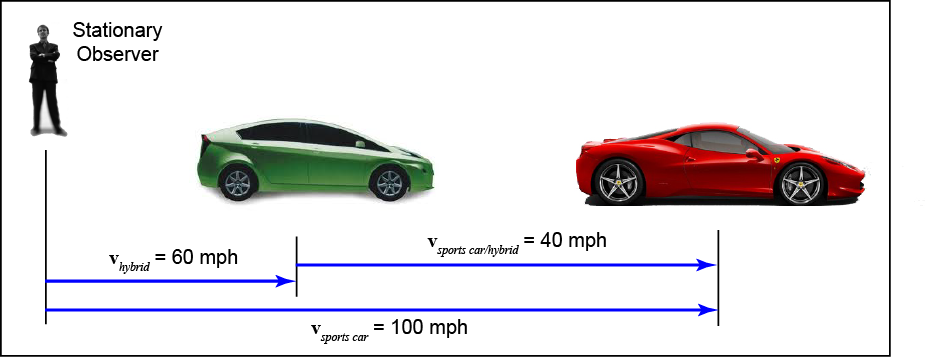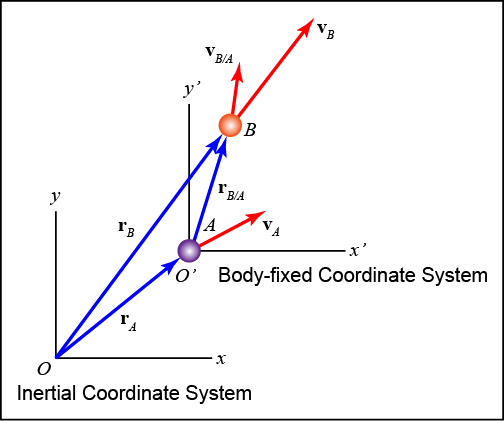Plane Curvilinear Motion - Relative Motion
Relative Motion
Sometimes it is useful to describe the motion of one object relative to another. Imagine that you are standing on the side of a freeway watching cars go by. You see a very cool sports car passing a small hybrid car as shown. The sports car is going around 100 mph and the hybrid is going around 60 mph. The 100 and 60 mph speeds are considered absolute speeds because they are relative to some fixed non-moving object. To the passenger in the hybrid the sports car appears to be going 40 mph (i.e. 100-60). In other words, the sports car is going 40 mph relative to the moving hybrid.

Reference frame definitions
- Inertial Reference Frame: An inertial reference frame is non-accelerating and non-rotating. For now, we will also assume that it is non-moving.
- Non-Inertial Reference Frame: A non-inertial reference frame has an origin that accelerates and/or axes that rotate.
- Body-fixed Reference Frame: A body-fixed reference frame is fixed to a body that is usually moving.
Position, velocity and acceleration can be described in terms of inertial coordinates or body-fixed coordinates as shown in the figure.

Absolute and relative motion
What is the difference between absolute position and relative position?
Click all that apply.
